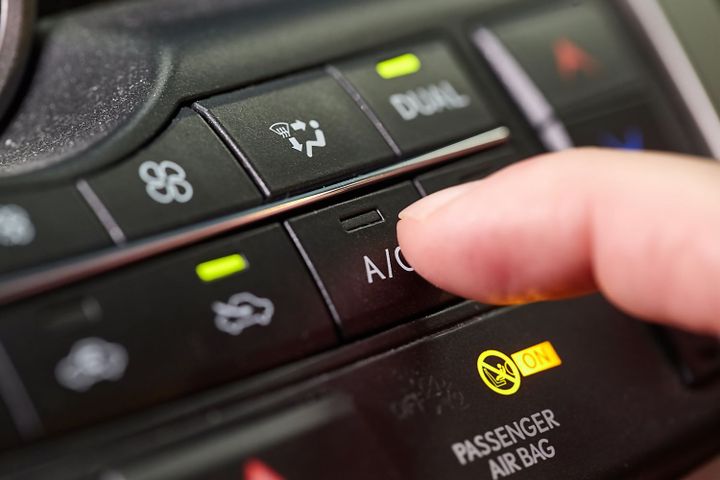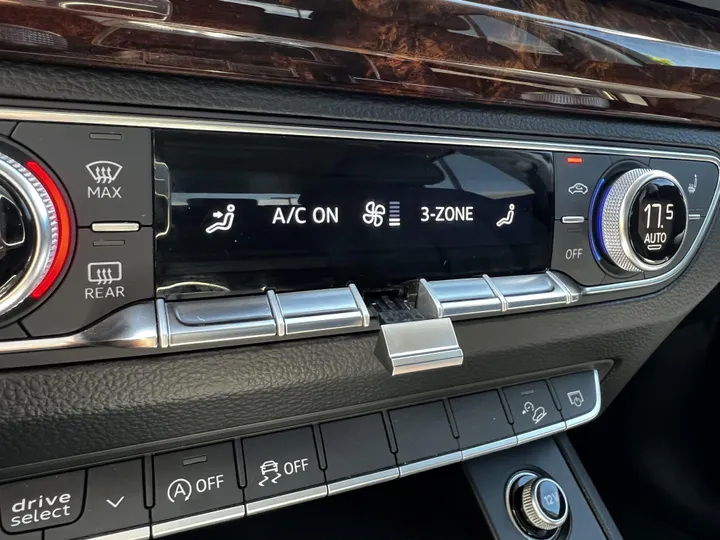


In modern vehicles, the heating, ventilation, and air conditioning (HVAC) system plays a crucial role in maintaining a comfortable cabin environment. However, the efficiency and performance of this system can be significantly compromised when the air intake vents become blocked or clogged. This comprehensive article will explore the causes, signs, consequences, diagnosis, cleaning methods, and preventive measures related to blocked air intake vents, providing practical solutions to ensure optimal HVAC performance and a pleasant driving experience.

The air intake vents are essential components of a car's HVAC system, allowing fresh air to enter the system for cooling or heating and circulation throughout the cabin. When these vents become obstructed, the HVAC system's ability to regulate the cabin temperature and air quality is severely hindered, leading to various issues that can compromise occupant comfort and system longevity.
Blocked or clogged air intake vents can arise from several factors:
| Cause | Description |
|---|---|
| Clogged Air Filters | Air filters trap dust, pollen, and airborne particles, but can become clogged over time, restricting airflow and potentially causing blockages in the air intake vents. |
| Debris Accumulation | Leaves, twigs, or other debris can accumulate around the air intake vents, obstructing the flow of air into the system. |
| Rodent/Insect Infestation | Rodents or insects may build nests or leave debris within the ductwork, leading to obstructions that can affect the air intake vents. |
| Damaged or Collapsed Air Hoses | The air intake hoses that connect the vents to the HVAC system can become damaged or collapsed over time, restricting or blocking airflow. |
Several signs may indicate that the air intake vents are blocked or clogged:
Weak or no airflow from the vents inside the cabin
Uneven cooling or heating in different areas of the cabin
Strange noises from the HVAC system, such as whistling, rattling, or humming
Musty or foul odors emanating from the vents
Ignoring blocked or clogged air intake vents can lead to severe consequences, including:
Reduced cooling or heating efficiency, compromising occupant comfort and potentially posing health risks
Increased energy consumption and higher fuel costs due to the HVAC system working harder
Potential damage to HVAC system components, such as the compressor, evaporator coils, or blower motor, leading to costly repairs
Poor air quality inside the cabin, which can exacerbate respiratory conditions or allergies
To identify and address blocked or clogged air intake vents, a thorough inspection is essential. The following steps can be taken:
Visual Inspection
Examine the air intake vents and surrounding areas for visible obstructions, such as leaves, twigs, or debris.
Check the air filters and replace them if they appear excessively clogged.
Checking the Ductwork
Use a flashlight or a borescope (if available) to inspect the ductwork for obstructions, damage, or signs of rodent or insect activity.
Look for collapsed or damaged air intake hoses.
Air Pressure Gauges
In some cases, specialized tools like air pressure gauges can help identify blockages or restrictions in the HVAC system's airflow.
Professional HVAC technicians may employ these tools for a more comprehensive diagnosis.
Once the source of the blockage or clog has been identified, various cleaning and unblocking methods can be employed:
| Method | Description |
|---|---|
| Replacing Clogged Air Filters | Replace clogged air filters with new ones to restore proper airflow. |
| Compressed Air or Vacuum Cleaners | Carefully use compressed air or a powerful vacuum cleaner to remove debris or obstructions from the air intake vents and surrounding areas. Exercise caution to avoid damaging components. |
| Cleaning Ductwork and Vents | For stubborn blockages or buildup within the ductwork and vents, use appropriate cleaning solutions, brushes, or foaming cleaners to thoroughly clean the system. |
| Repairing or Replacing Air Hoses | If any air intake hoses are found to be damaged or collapsed, repair or replace them to restore proper airflow. |
To minimize the risk of blocked or clogged air intake vents and ensure optimal HVAC system performance, follow a regular preventive maintenance routine:

Replace air filters according to the manufacturer's recommended schedule or sooner if they appear excessively clogged.
Have a professional HVAC technician inspect and clean your car's HVAC system periodically to remove any buildup of debris or contaminants.
Avoid leaving objects or debris in the cabin or around the air intake vents, as these can potentially find their way into the ductwork and cause blockages.
While some minor blockages or clogs in the air intake vents may be addressed through DIY methods, it is often advisable to seek professional assistance from an experienced HVAC technician in the following situations:
The blockage or clog is severe or difficult to access
You suspect damage to the ductwork or other HVAC system components
You have tried cleaning and unblocking the vents, but the issue persists
For periodic professional cleaning and maintenance services
Professional HVAC technicians have the necessary tools, expertise, and experience to diagnose and resolve even the most complex issues related to blocked or clogged air intake vents, ensuring the optimal performance and longevity of your car's HVAC system.
Maintaining clear and unobstructed air intake vents is crucial for ensuring a comfortable and efficient HVAC system in your car. By understanding the causes, signs, and consequences of blocked vents, and following proper diagnostic, cleaning, and preventive maintenance practices, you can restore and maintain optimal airflow, cooling, and heating performance. Don't hesitate to seek professional assistance when necessary to ensure a thorough and effective resolution to any issues with your vehicle's HVAC system.
Air intake vents allow fresh air to enter the HVAC system for cooling, heating, and circulation throughout the cabin. They play a crucial role in maintaining a comfortable cabin environment.
Yes, a clogged cabin air filter can restrict airflow and potentially cause blockages in the air intake vents. Replacing the cabin air filter regularly is essential.
Common signs include weak or no airflow from the vents, uneven cooling or heating, strange noises from the HVAC system, and musty or foul odors emanating from the vents.
Ignoring blocked vents can lead to reduced cooling or heating efficiency, increased energy consumption, potential damage to HVAC components, and poor air quality inside the cabin.
Yes, compressed air can be carefully used to remove debris or obstructions from the air intake vents and surrounding areas, but caution should be exercised to avoid damaging components.
Air pressure gauges can help identify blockages or restrictions in the HVAC system's airflow, providing a more comprehensive diagnosis of the issue.
It is recommended to have a professional HVAC technician inspect and clean your car's HVAC system periodically, typically once a year or as recommended by the manufacturer, to prevent blockages and ensure optimal performance.
Yes, leaving objects or debris in the cabin or around the air intake vents can potentially find their way into the ductwork and cause blockages, so it is important to keep the cabin clean and free of clutter.
Professional assistance is recommended for severe or difficult-to-access blockages, suspected damage to the ductwork or HVAC components, persistent issues after attempting DIY cleaning, and periodic professional cleaning and maintenance services.
Yes, blocked air intake vents can cause the HVAC system to work harder, leading to increased energy consumption and potentially higher fuel costs.

Sarah isn't your average gearhead. With a double major in Mechanical Engineering and Automotive Technology, she dived straight into the world of car repair. After 15 years of turning wrenches at dealerships and independent shops, Sarah joined MICDOT to share her expertise and passion for making cars run like new. Her in-depth knowledge and knack for explaining complex issues in simple terms make her a valuable asset to our team.




